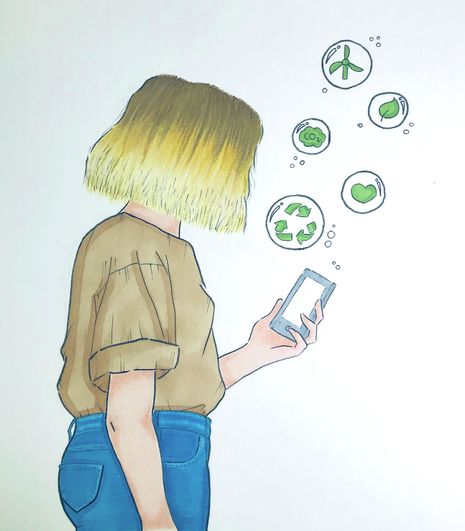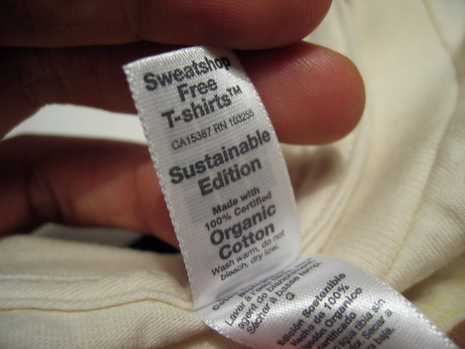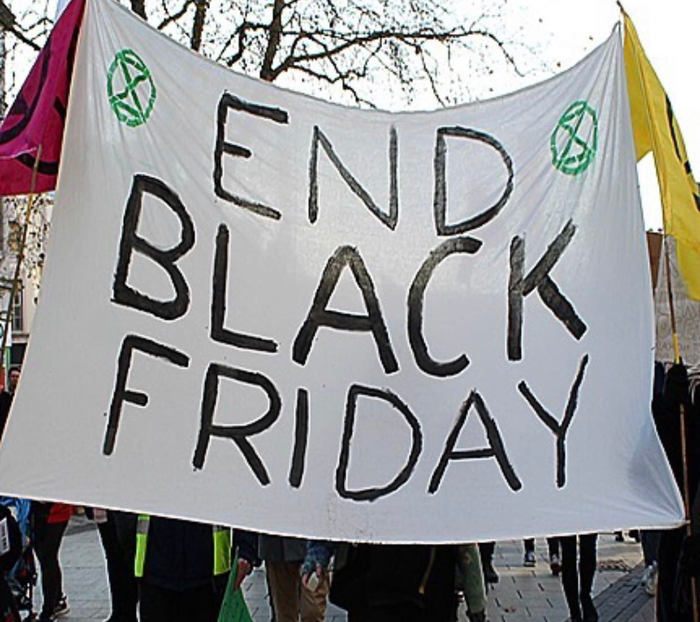Selling Sustainability: Navigating Greenwashing in Fashion
Columnist Alexandra Zhirnova investigates how the term ‘sustainable’ has joined the ranks of marketable buzz words in a not-so-green industry.

The drill is all too familiar. Swiping through Instagram stories, I am presented with a clean, minimal picture of a cute pair of handbags by a certain brand, whose profile description assures me that their bags are ‘made of recycled materials’, ‘one hundred percent vegan’ and – I could have almost predicted it – ‘sustainable’.
“The best thing we as conscious consumers can currently do about greenwashing is to do our research and speak out against fake sustainability.“.
When a word is repeated so often, its meaning begins to fade. Alongside terms like ‘vegan’ and ‘ethical’, ‘sustainability’ has become just another label that can be slapped on almost anything in order to boost sales. And boost sales it does. The data collected by the fashion shopping platform Lyst shows that searches involving the word ‘sustainable’ increased by 37% last year, while the Financial Times report that the number of clothes and accessories labelled as ‘sustainable’ has quadrupled in the past four years.
It would seem to be a good sign: the fashion industry listening to consumers’ demands and adopting more sustainable practices. But there’s a problem. Not only is fashion growing ever more unsustainable, its self-labelling is often misleading.

Self-promotion by claiming to be sustainable, dubbed ‘greenwashing’ or ‘green sheen’, is not new. The term was coined in 1986 by environmentalist Jay Westervelt to describe unsubstantiated claims designed to deceive consumers into believing that a company’s products are better for the environment than they are in reality. High street brands have been blamed for this more than any others. H&M’s ‘Conscious Collection’ caused quite an uproar at the time of its release in 2019, even prompting the Norwegian Consumer Authority to test the brand’s claims to sustainability. And it wasn’t even the first time H&M caused such controversy. Their bring-back policy, which encourages customers to return their old clothes in exchange for discount coupons, has been criticised for years. While the advertising campaign promises to ‘turn your old clothes into new garments’, according to Newsweek, only a fraction are woven into new clothes. According to Newsweek’s sources, the majority of the clothing is donated to charities or otherwise repurposed, which saves it from landfill. In this case, one has every right to wonder why the clothes need to go to charity shops via the high street.
Despite the growing awareness of greenwashing, fast fashion giants refuse to disclose their supply chains and working conditions. And even when they try to make a positive change, for instance using sustainable materials, their reputation and lack of transparency provokes only mistrust. Just before the first lockdown, Primark introduced their ‘Wellness’ range which featured ‘products made of either organic cotton, recycled materials or sustainable materials’. It was met with a wall of social media criticism.
And if it is difficult to get answers from big brands like H&M and Primark regarding their environmental policies and supply chains, it is even harder to decide whether or not to trust smaller brands without a long history in the market. Small retailers claiming to be ‘green’ have become especially prominent as Instagram entered the e-commerce sphere. But just as fake vintage stores have popped up to satisfy our desire for grandma clothes, so have various unscrupulous vendors selling sweatshop goods who manipulate their customers not only to buy their product, but also to spend more money because it is allegedly ‘eco-friendly’ and ‘ethically produced’.
Even when customers make an attempt to be informed, they often encounter dubious information regarding the brand’s actual efforts to minimise their impact on the environment. One of the key giveaways is a lack of transparency regarding supply chains. Whether or not the brand uses organic or recycled materials, a reluctance to disclose the origins and manufacturing conditions of their clothes often means that even if they aren’t malicious, they have so many contractors and subcontractors it is nearly impossible to trace the origins of the finished product, much less to convince third-party suppliers to reduce their environmental footprint.
The ever-growing number of brands guilty of greenwashing is not surprising. Unlike food labels such as ‘organic’ and ‘free range’, which can result in prosecution by law if misappropriated, ‘sustainable’ is not a protected term, which means that legally it can be used with almost anything. The best thing we as conscious consumers can currently do about greenwashing is to do our research and speak out against fake sustainability. And if this is too much like cancel culture, promoting actually sustainable brands and bespoke clothing as well as thrifting clothes instead of buying them new are also great ways to put pressure on brands eager to cash in on our demand for sustainability.
To make this easier for you, here is my guide to avoiding greenwashing:
- Look for Numbers: Although the term ‘sustainable’ has gained such popularity, not many retailers who use it actually provide any data regarding their impact; the ones that do are generally the ones you should trust.
- Don’t Be Afraid to Ask Questions: As eco-fashion designer Stella McCartney recently told the Financial Times, ‘The majority of people who say they’re doing a sustainable thing, if you ask one question, it will pretty much fall down at the first hurdle.’ So, if you can’t see any concrete figures or want to know more about who made your clothes, send a message. Chances are, a smaller brand will be happy to talk to you, and a bigger one will be forced to answer if there’s enough people asking.
- Check for Certifications: A truly sustainable brand will strive to obtain at least a few ethical fashion labels, like Bluesign, B Corp or Fairtrade. Fashionista has made a beginner’s guide to what they mean and who should have them.
- Check for Transparency: Fashion Revolution’s Transparency Index collects information released by top fashion brands regarding their supply chains and the working conditions on their factories. Alongside the Worker Rights Consortium, it is one of the most useful tools for greenwashing research. It also helps to keep an eye on the sustainability section of Vogue Business and individual business ratings on Good On You.
- And lastly, Buy Local and/or Bespoke: Rather than buying from large corporations who may have little influence on their subcontractors, we can all support local industry and craftsmanship by buying our clothes from small businesses nearby. They are much more transparent about their materials, and the items last much longer than those from the high street.
As a consumer, it can be tempting to leave the responsibility for reducing the fashion industry’s environmental impact to businesses. But it is important to remember that if we change our shopping habits, businesses will have to change too.
 News / Caius mourns its tree-mendous loss23 December 2025
News / Caius mourns its tree-mendous loss23 December 2025 News / Clare Hall spent over £500k opposing busway 24 December 2025
News / Clare Hall spent over £500k opposing busway 24 December 2025 Comment / The ‘class’ of Cambridge24 December 2025
Comment / The ‘class’ of Cambridge24 December 2025 Comment / Yes, I’m brown – but I have more important things to say22 December 2025
Comment / Yes, I’m brown – but I have more important things to say22 December 2025 Interviews / Politics, your own way: Tilly Middlehurst on speaking out21 December 2025
Interviews / Politics, your own way: Tilly Middlehurst on speaking out21 December 2025








